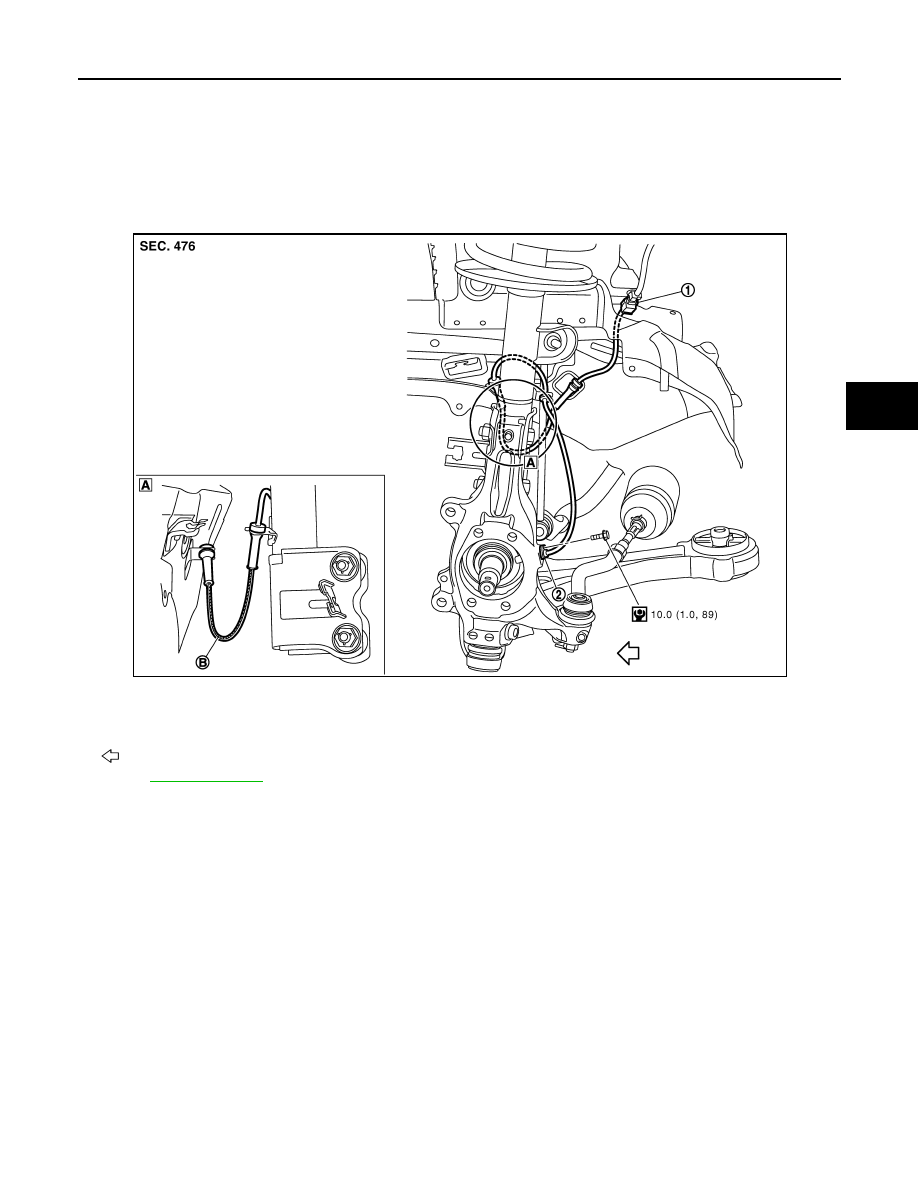Nissan Murano Z51 (2011 year). Manual - part 17

WHEEL SENSOR
BRC-119
< REMOVAL AND INSTALLATION >
[VDC/TCS/ABS]
C
D
E
G
H
I
J
K
L
M
A
B
BRC
N
O
P
REMOVAL AND INSTALLATION
WHEEL SENSOR
FRONT WHEEL SENSOR
FRONT WHEEL SENSOR : Exploded View
INFOID:0000000006263544
NOTE:
The above figure (front side) shows left side. Right side is the mirror image.
FRONT WHEEL SENSOR : Removal and Installation
INFOID:0000000006263545
REMOVAL
Be careful with the following when removing sensor.
CAUTION:
• Never twist sensor harness as much as possible, when removing it. Pull sensors out without pulling
sensor harness.
• Be careful to avoid damaging sensor edges or rotor teeth. Remove wheel sensor first before remov-
ing front or rear wheel hub. This is to avoid damage to sensor wiring and loss of sensor function.
• When you see the harness of the wheel sensor from the front side of the vehicle ensure that the
white lines (B) are not twisted.
INSTALLATION
Be careful with the following when installing wheel sensor. Tighten installation bolts to the specified torques.
• When installing, make sure there is no foreign material such as iron chips on and in the mounting hole of the
wheel sensor. Make sure no foreign material has been caught in the sensor rotor. Remove any foreign mate-
rial and clean the mount.
1.
Front LH wheel sensor connector
2.
Front LH wheel sensor
B.
White line (slant line)
: Vehicle front
Refer to
JSFIA0190GB
Revision: 2011 November
2011 MURANO